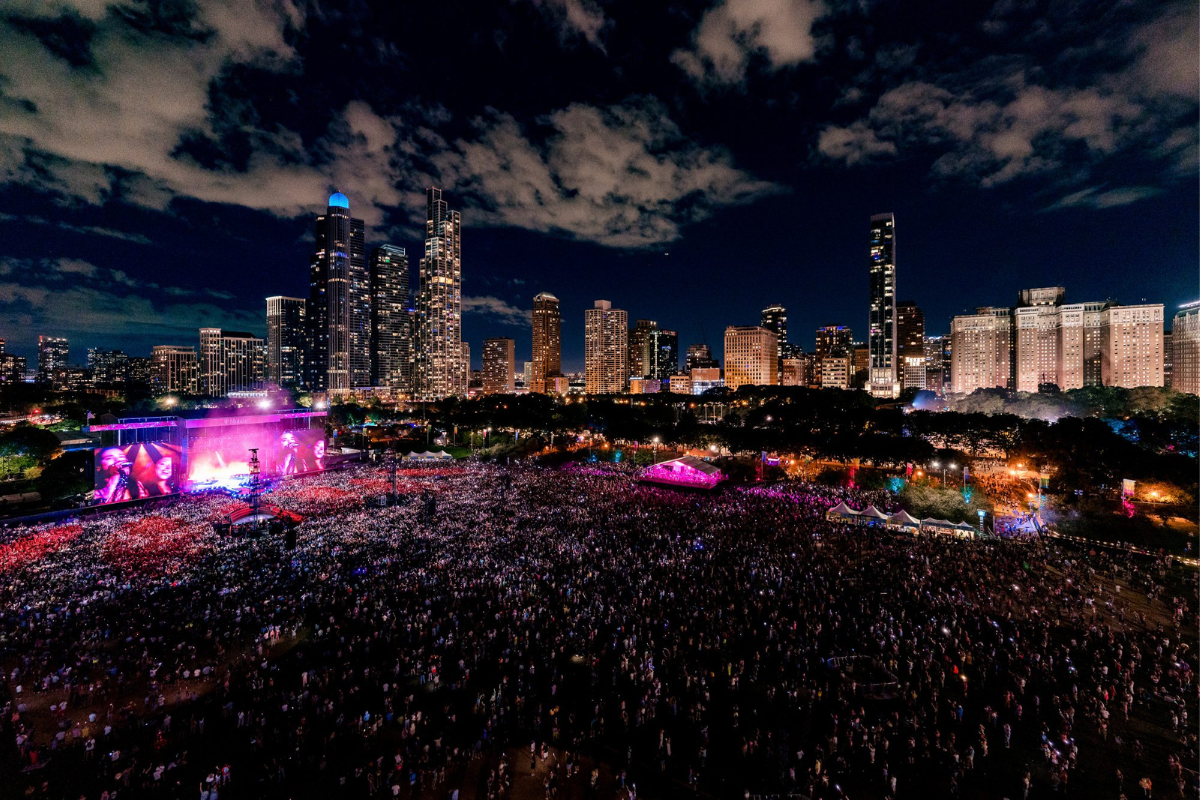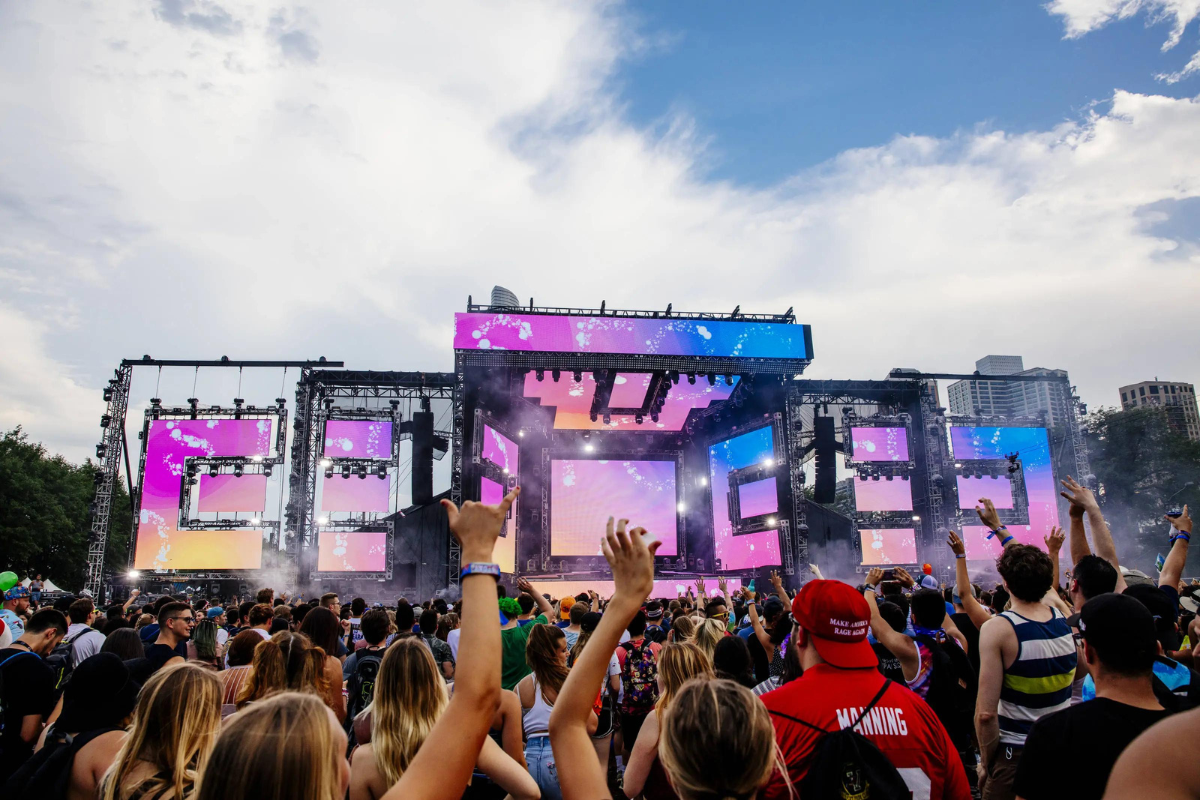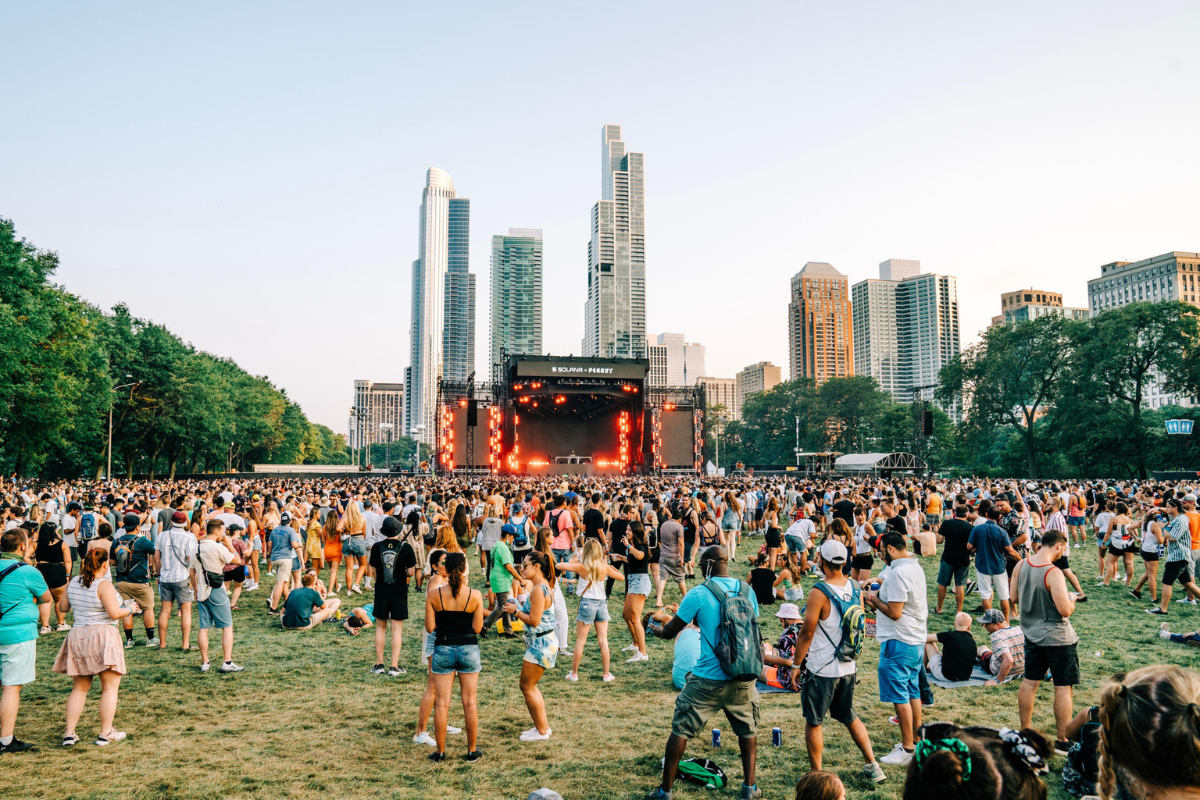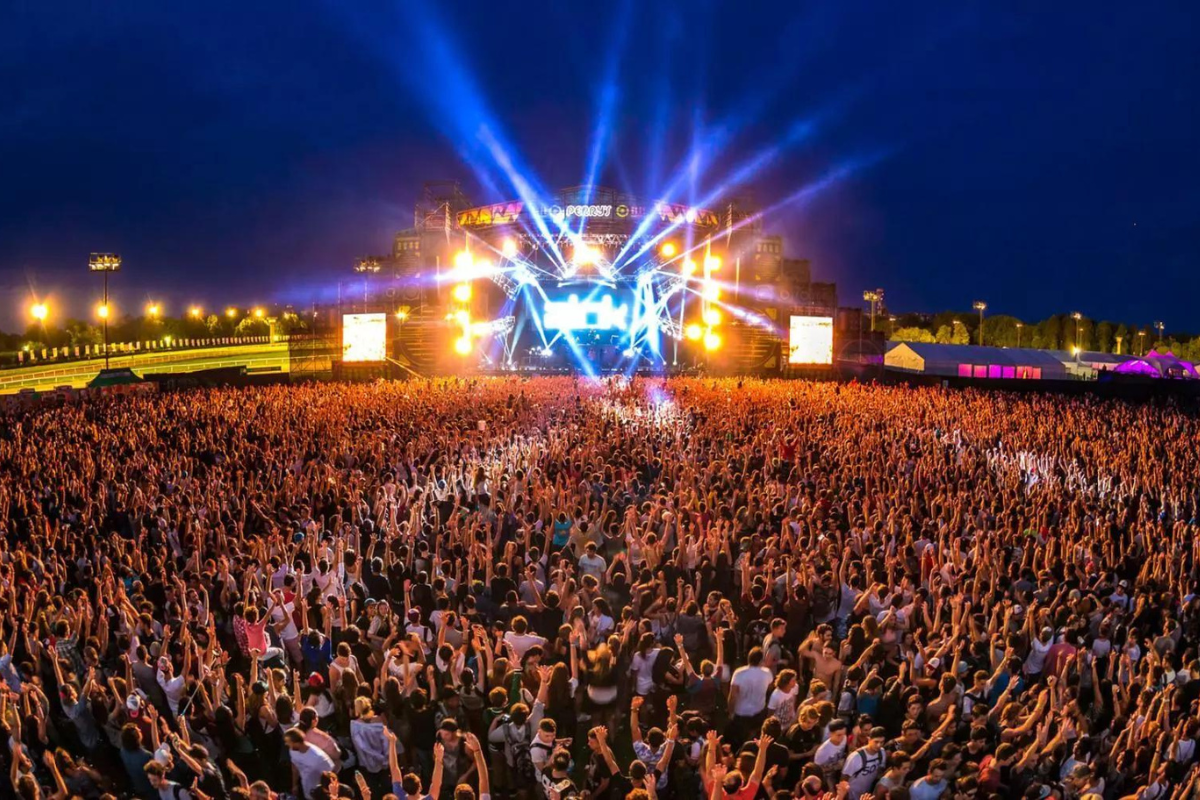Lollapalooza, a name synonymous with music, mayhem, and memories, is more than just a music festival. It’s a vibrant tapestry woven from the threads of a thousand melodies, a pulsating heart that beats to the rhythm of a million dreams. Held annually on the picturesque shores of Grant Park in Chicago, Lollapalooza transcends the boundaries of a mere concert, transforming into a sonic symphony that engulfs the city in its electrifying embrace.

Photo: EDM Identity
From its humble beginnings in 1991 as a touring festival championing alternative rock, Lollapalooza has morphed into a behemoth of musical diversity. Its sprawling stages play host to an eclectic mix of genres, from the thunderous riffs of heavy metal to the pulsating beats of electronic dance music, the soulful crooning of indie darlings to the infectious energy of pop superstars. It’s a sonic smorgasbord, a musical kaleidoscope that caters to every taste and temperament.
But Lollapalooza is more than just the music. It’s a vibrant tapestry of experiences that go beyond the sonic spectrum. The air vibrates with the infectious energy of the crowd, a sea of bodies swaying and singing in unison, united by the universal language of music. Laughter mingles with the pulsating basslines, the scent of food trucks mingles with the sweet aroma of summer grass, and the sky explodes with a kaleidoscope of colors as the sun dips below the horizon.
Lollapalooza is a haven for self-expression, a canvas where individuality is celebrated. Attendees don their most outlandish attire, a riot of sequins, feathers, and neon paint, transforming themselves into living pieces of art. It’s a place where you can be whoever you want to be, where the only rule is to let loose and embrace the moment.
The festival fosters a sense of community, a feeling of belonging that transcends age, race, and background. Strangers become friends, united by their shared love for music. Hi-fives are exchanged, hugs are freely given, and stories are shared under the open sky. Lollapalooza becomes a temporary utopia, a world where music is the common language and differences dissolve in the face of shared joy.

Photo: Action Sports Connection
But Lollapalooza is also a testament to the power of music itself. It’s a reminder that music has the power to transcend borders, to bridge divides, and to heal broken hearts. It’s a force that can inspire, uplift, and ignite revolutions. As the final notes of the last set fade, a sense of bittersweet nostalgia hangs in the air. Leaving Lollapalooza is like leaving a dream, a temporary escape from the mundane into a world of pure sonic bliss.
Lollapalooza is not just a music festival. It is a cultural phenomenon. It’s a testament to the enduring power of music, a celebration of diversity and self-expression, and a reminder that even in the midst of chaos, there is beauty and unity to be found. So, the next time you hear the name Lollapalooza, remember it’s not just a festival; it’s a symphony on the shores of Chicago, a sonic tapestry woven from the threads of a million dreams.
Lollapalooza: A sonic boom for Chicago’s economy and culture
Lollapalooza’s sonic symphony resonates far beyond the shores of Grant Park. Its impact on Chicago stretches deep into the city’s economic and cultural landscape, leaving a vibrant melody not just in the ears but in the pockets and hearts of Chicagoans.

Photo: Choose Chicago
The festival is a financial powerhouse, injecting millions into the city’s veins. Studies estimate the 2023 edition alone generated a whopping $422 million, employing thousands and filling hotel rooms, restaurants, and bars to the brim. Local businesses, especially those around Grant Park, see a surge in sales, with some reporting triple their usual weekend earnings. The city also benefits from tax revenue generated by ticket sales, food and beverage stands, and merchandise vendors. In essence, Lollapalooza becomes a temporary goldmine, boosting Chicago’s economy during a crucial summer tourist season.
But the impact goes beyond mere dollars and cents. Lollapalooza is a cultural kaleidoscope, showcasing Chicago’s diversity and vibrancy to the world. The festival attracts visitors from all corners of the globe, injecting a cosmopolitan energy into the city’s streets. Hotels and restaurants buzz with foreign languages, while Grant Park transforms into a melting pot of cultures, traditions, and fashion statements. This exposure not only broadens the horizons of Chicagoans but also strengthens the city’s reputation as a vibrant cultural hub.
Lollapalooza isn’t just about basking in the past. It is a platform for pushing boundaries and embracing innovation. The festival features emerging artists alongside established acts, fostering a fertile ground for musical discovery. Local vendors showcase their unique wares, from handcrafted jewelry to sustainable clothing, turning Grant Park into a marketplace of creative expression. This focus on the future helps keep Chicago’s cultural pulse beating strong, inspiring local artists and entrepreneurs to dream big and contribute to the city’s ever-evolving tapestry.
While the symphony is overwhelmingly positive, there are whispers of discord. Some residents bemoan the noise and disruption, while others worry about the gentrification that may follow the festival’s success. Striking a balance between economic benefit and local well-being requires careful planning and community engagement. Lollapalooza’s commitment to sustainability initiatives, like eco-friendly waste management and transportation options, demonstrates a conscious effort to minimize its environmental footprint.

Photo: Hurriye Daily News
Ultimately, Lollapalooza’s impact on Chicago is a complex melody, with notes of economic prosperity, cultural enrichment, and innovative spirit harmonizing alongside strains of disruption and concern. By acknowledging the challenges and working towards solutions, Chicago can ensure that Lollapalooza remains a symphony of success, enriching the city for residents and visitors alike.

